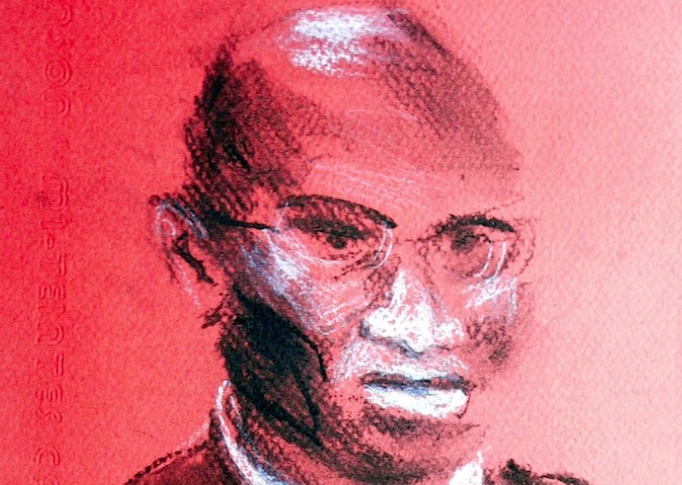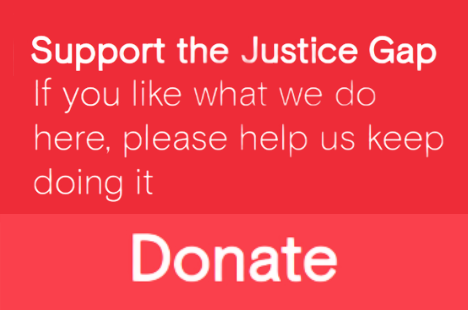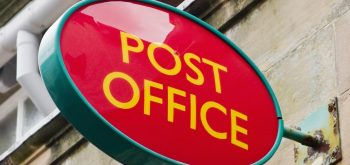‘Lawyers are at the heart of many cases of the wrongly accused and wrongly convicted: wrong, shoddy, lazy representation. It is a recurrent theme. It should haunt us.’
Gareth Peirce, speaking at the launch of the Justice Gap’s Wrongly Accused, 29 March 2012 – see HERE
Andrew Pountley was convicted of the abduction, rape and murder of Rosie, a four year old girl, just after midnight on a January night in 1996, writes Andrew Green. Key evidence against him was that of a child witness who lived across the road from where the girl was taken. He said he saw Pountley carry Rosie down a side passage, across a garden, and along a track behind the garden. Pountley maintained his innocence, and the television programme Rough Justice investigated the case.
- Andrew Green has a doctorate in criminology. In 1993 he founded INNOCENT, and is currently its secretary. He is a founder of United Against Injustice. Andrew is deputy director of the University of Sheffield Innocence Project, and author of Power Resistance Knowledge: the epistemology of policing (2008).
- This is essay is from a new collection of essays (No defence: miscarriages of justice and lawyers) as part of the Justice Gap series and following on from Wrongly Accused: who is responsible for investigating miscarriages of justice? (to be published in association with Solicitors Journal and Wilmington). You can download that collection HERE.
- Contributors for No Defence include Eric Allison; Dr Ros Burnett; Prof Ed Cape; Dr Dennis Eady; Francis Fitzgibbon QC; Mark George QC; Andrew Green; Campbell Malone; Michael Mansfield QC; Mark Newby; Daniel Newman; Paul May; Dr Angus Nurse; Correna Platt; Julie Price; Dr Hannah Quirk; David Rose; Adam Sampson; Satish Sekar; and Tom Wainwright. Thanks to all.
- Thanks to Isobel Williams for sketch (www.izzybody.blogspot.co.uk.)
_______________________________________________________
With their researcher, I visited the scene. It was immediately obvious to us that the witness could not have seen what he claimed to have seen. Behind the row of houses which included the house from which Rosie was taken, the ground fell away steeply, so that the gardens behind them and the track were completely obscured by them and invisible from the witness’s viewpoint.
Surely, I thought, someone from Pountley’s defence team must have visited this site, 1.5 miles from the solicitors’ office, and established that the witness’s evidence was untrue? But I already knew that I should make no assumption that defence lawyers investigate even the most obvious aspects of key prosecution evidence. In 1996 I published an article on this subject in the newspaper for prisoners, Inside Time: ‘Lawyers who let you down.’
Lawyers who let you down
I received nearly 200 unsolicited letters, containing such comments:‘You have hit on a taboo subject, a practice that has been going on for years and to my knowledge you are the first person to bring it to light’; ‘At last someone has spoken out about what really does take place in court cases… Once you are in the legal system you are systematically fitted up by people you put your trust in’; and ‘When I first read your article … I thought “How has this man written about my case without knowing me!”’
For over 20 years I have listened, in the meetings of INNOCENT and its sister organisations, to the accounts of the friends and families of those who believe that someone they love has been wrongly convicted, and virtually all of them believe that their loved one would not have been convicted had their lawyers been more diligent. Their impressions dovetailed with the findings of the large scale and detailed academic research by Professor Mike McConville and his associates in the early 1990s, which showed that defence lawyers usually believed in ‘the trustworthiness of the prosecution case’ and that their clients were guilty (Standing Accused, 1994).
But should we believe these stories? Are they simply the product of those who feel themselves to be the victims of injustice blaming an easy target? Or are they made up by those who are actually guilty, hoping to escape justice on legal technicalities? Laurie Elks, a former commissioner at the CCRC, tells us that in applications to the Commission, ‘assertions of legal incompetence loom very large indeed’, but that ‘a majority of such claims are plainly incredible or defamatory’ in his book Righting Miscarriages of Justice? published by JUSTICE in 2008.
Closer inspection of claims I have heard does not permit them to be easily dismissed as ‘plainly incredible’, however. Complaints that important evidence was not put to juries are common. ‘The evidence against me was flimsy to say the least, yet my defending counsel Mr *** Q.C. took it upon himself to discharge all my defence witnesses without giving valuable evidence to the jury, one of them being a paediatrician who could have proven the allegations to be untrue, how can any accused person have a fair trial without any defence witnesses?’ wrote a prisoner serving 12 years for rape.
Jordan Cunliffe was convicted of the murder of Garry Newlove in 2007. There was no evidence that he had physically attacked Mr Newlove, but he was in the company of two others who knocked Mr Newlove to the ground and kicked him in the neck, thus causing his death. Cunliffe was convicted because he was believed to have encouraged the other two, through use of the legal doctrine of joint enterprise. His defence was that he suffers from visual impairment so disabling that he did not know that Mr Newlove was being attacked, and could not have anticipated the assault or tried to prevent it. During his trial, prosecution counsel told defence counsel that he would not contest a report by an expert on Cunliffe’s eyesight, on condition that the expert himself was not called to testify in court. Cunliffe’s counsel agreed.
In his summing up, judge Andrew Smith said:
‘He’s partially sighted suffering from keratoconus and you heard from the report of Mr. Parkin, a Consultant Ophthalmic Surgeon that he’s severely physically handicapped and would qualify for blind registration. As a result for example he couldn’t distinguish the men from the ladies in the jury box.’
Mr Parkin’s report was however highly technical, and he was expecting to be able to explain to the jury that Cunliffe’s vision was extremely blurred, and that he saw multiple images which were particularly hard to interpret in the night time conditions when the assault took place. Street lighting and car headlamps appeared to him as multiple flashing lights. He could not see what was happening around him. But this information was not given to the jury who convicted him, because of the lawyers’ time saving deal.
In any case, anyone hoping the Court of Appeal criminal Division [CACD] might overturn a conviction simply because of negligent or incompetent courtroom advocacy is likely to be wasting her or his time. Elks writes that ‘it has become clear that the [CCRC] is likely to be distrusted or even resented by the Court of Appeal when it has the temerity to suggest that learned counsel has slipped up on the job.’ Even in the case of Adams [2007] EWCA Crim 1, referred by the Commission, when the CACD quashed Adams’s conviction after hearing evidence not used at his trial because of multiple failings in the work of his solicitors, the appeal judges administered only a faint trace of a rebuke to counsel who ‘did their best’ but ‘underestimated the time needed to complete the work.’
Where counsel for Adams had failed was in requiring their instructing solicitor to read material already disclosed to them by the prosecution. It seems the CACD is prepared to admit a few criticisms of solicitors. To those of us trying to help a few of those people in prison who claim to be innocent, the failings of solicitors appear to be routine.
In case of Susan May, the prosecution relied effectively on one item of evidence. May’s elderly aunt was beaten and smothered between 9pm and the small hours of the following morning. She was found by May, her carer, in the morning. Forensic experts discovered marks on the wall near the bed where the victim was found. They included a palm print and fingerprints identified as those May’s, and on this evidence she was convicted of murder. ‘There would need to have been quite a lot of blood on the hand to produce the mark,’ the judge told the jury.
May could think of only two possible explanations. Either she had touched the body when she found the victim in the morning, but had forgotten she had done so because she was extremely distressed, or, more probably, the marks predated the murder. But if there was a lot of blood, clearly visible, how could such marks be old?
20 years later, her solicitor, the second to have taken on the case since the trial, gave the full case file to May, who still maintains her innocence. In the file, she found documents never previously disclosed to her. They included a series of photographs of the marks on the wall, taken when they were first noticed, and at various stages of chemical treatment intended to enhance the fingerprints so that they could be identified, as well as presumptive test for blood. The first of the series showed faint, almost undetectable smudges. Fingerprints could only be detected after chemicals had been sprayed on to them. These were clearly old marks, made long before the date of the murder, and this evidence which demonstrated the claims of the prosecution to be wrong must have been available since before the original trial.
How can such failures in the preparation of defences by solicitors be explained? The explanations put forward include: the inexperience of those who have never represented defendants in trials of complex cases involving serious charges; the cutting of corners to save time and money (failing to read material not used by the prosecution, as in Adams, or not carrying out basic research, as in Pountley); failures to take instructions from clients or failures to act on instructions; and failures to make adequate defence statements and requests for disclosure of evidence by the prosecution (in one case file I found a series of letters from the CPS begging the defence to supply a defence statement, the last of these written on the first day of the trial!).
Defence lawyers do not originate miscarriages of justice, but they make many of them impossible to remedy. The Criminal Appeal Act 1995 (s.4) allows the CACD to admit fresh evidence in appeals ‘having regard to … whether there is a reasonable explanation for the failure to adduce the evidence at the trial’, but in practice the CACD presumes that all lawyers are competent and committed to their work, and so any failures to use apparently relevant evidence in trials must be due to ‘tactical decisions’.
My acquaintance with the detail of many cases and research on the practices of defence lawyers leads me to endorse everything that Maslen Merchant wrote in his article for the Justice Gap in 2012. You can read the whole article HERE.
Luke Dougherty and Laszlo Virag were both convicted in 1972 of separate robberies on eyewitness identification evidence and both subsequently exonerated. These cases led to the Devlin Commission on eyewitness identification and in turn to the judgement in Turnbull which provided the term of the standard warning given by judges in eyewitness identification cases. But really the problem faced by both men was the failures by their own lawyers to call their alibi witnesses. Dougherty was on a coach with 20 to 30 people who knew him at the time the robbery took place. Adequate preparation of his defence would have prevented the case from even going to trial.
While some attempt has been made to reduce the contribution of misidentification to the conviction of innocent people, has nothing been done to reduce the failures of lawyers to prevent miscarriages of justice?
I was reminded of Dougherty and Virag recently when I listened to the friend of someone convicted of the robbery of a corner shop. He said that witnesses had identified his friend despite the fact that he was much taller than either of the two men actually seen running from the shop; that his friend knew of a group of witnesses prepared to testify that he was elsewhere at the time of the robbery; that he had informed his solicitor of these witnesses and provided contact details; that counsel had not been involved in the case until the day before the start of the his trial; and that none of his alibi witnesses had been contacted or called to give evidence.
Maximising profits
The allegations against defence lawyers have been much the same for decades, and now it is alleged that their failings are exacerbated by cuts in legal aid funding. No doubt that is so, but the problem is as much structural as immediately financial. As Merchant says, solicitors’ practices are businesses. They seek to maximise profits by minimising costs and generating greater volumes of work. That means not just reducing the time spent on case preparation, but also adopting practices that border on the unethical. Conflicts of interest appear to be ignored, such as a murder case in which the same firm of solicitors represented both a defendant and the person named by the defence in court as the perpetrator; and a riot case in which two separate groups of people blamed the others for the whole of the riot, and in which one firm of solicitors had clients from both groups.
In practice finding evidence to support defence cases is often not technically difficult. The evidence which led to the quashing of the convictions of Sally Clarke for the murder of two of her children was discovered by Clarke’s husband, whose persistence in searching for medical records resulted in the disclosure of evidence that the children had died from natural causes. Almost any evidence can be rooted out by diligent lawyers: a senior detective once remarked to me that he relied on defence lawyers not preparing cases thoroughly.
The problem of poor defence work which leads to injustice is not so much due to the negligence or incompetence of individual lawyers, but of the situation in which these individuals find themselves, a situation created not just by current financial pressure, but by economic structure and an occupational context in which relationships with other lawyers and even police officers are closer than those with clients, where clients are routinely disbelieved and assumed to be guilty (justifying inadequate case preparation).
Research conducted over the last 40 years has revealed the institutional divide between criminal justice insiders and their clients from outside the system, frequently regarded as dependents, outsiders, others, and alien (see also the excellent work by Daniel Newman recently published by the Justice Gap). ‘Starburger’, in a comment on Merchant’s article, assures us of lawyers’ ‘firm intention to act in the best interests of their clients’; the latter see promises frequently made but rarely kept.
What possible reasons could there be for this situation to change? Those few ‘conscientious, ethical, altruistic lawyers’ (to quote Maslen Merchant) will continue to have their work cut out for many years to come as they attempt to clear up the messes left by the others, and while some lawyers may imagine that miscarriages of justice amount to only a minor problem, organisations like INNOCENT have a strong impression that their frequency is increasing alarmingly.








